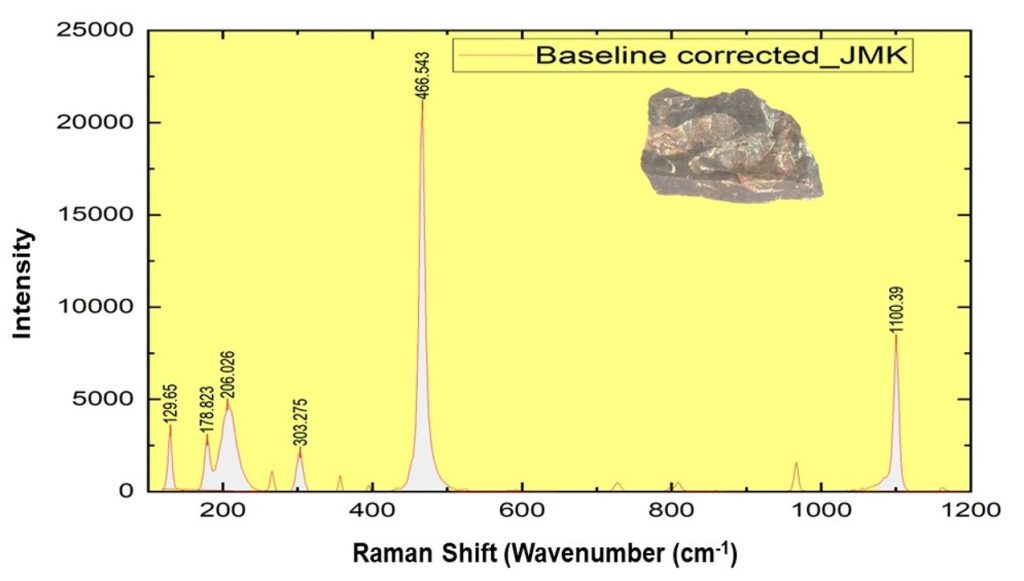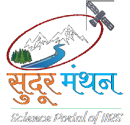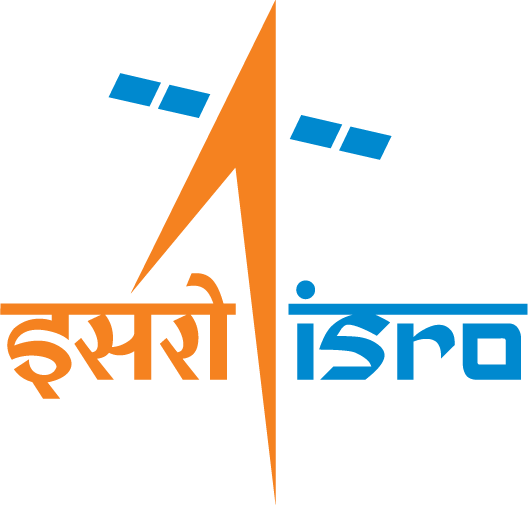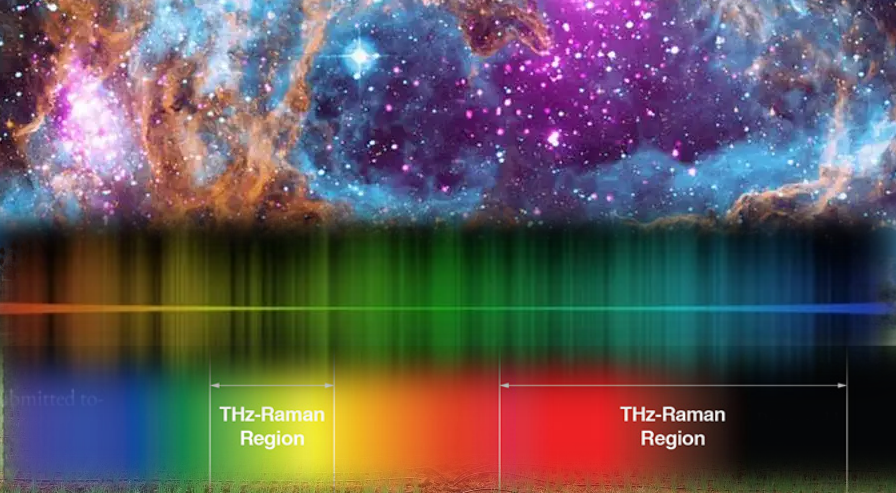Mamta Chauhan, Saswati Panda, Ankita Gaur, R.P. Singh and R. S. Chatterjee
Raman spectroscopy is an analytical technique to identify mineral, rocks and detect associated organic compounds. This technique is based on the phenomenon of raman effect which causes frequency difference between the incident and the fraction of scattered light. It is inelastic scattering of light by matter in which there is a shift in scattered photon energy (free energy) relative to incident photon. The position, intensity and width of the diagnostic peaks of the resultant raman spectrum depends on crystal orientation, crystallinity, grain size and chemistry of rock/mineral thereby used for performing their qualitative and quantitative analysis. Raman spectroscopy usually probes the molecular vibrations and reveals theunique information related to chemical composition, structure, and dynamics for crystalline and amorphous states. Its minimal sample preparation requirements, sensitivity to changes in molecular polarizability during molecular vibration make it an ideal tool for comprehensive analysis.

Figure 1- An example Raman spectrum presented as an intensity-versus wavelength shift recorded over a range of 100-1200 cm-1 acquired from our recent work on Indian based Martian analogue site sample collected from Jhamarkotra stromatolite field near Udaipur, Rajasthan. The spectrum shows Raman shifts of around 1100 cm−1 and 466 cm−1 for dolomite and monazite, respectively.
Raman spectroscopy has number of advantages over infrared techniques like capability to analyze solid, liquid and gases, its sensitivity to homo-nuclear molecular bonds and therefore it is unique in its ability to discriminate between inorganic and organic host, non-destructively. In addition to mineral/rock and organic material identification with only optical access to the sample, no sample preparation is necessary, which makes Raman spectroscopy a suitable technique for space exploration. This technique has broad application to planetary surface analysis including Mars, its moons (Phobos and Deimos), Venus, and asteroids. In planetary exploration for the first time Raman have been used in SHERLOC on-board the Perseverance rover to analyze Martian surface at Jezero crater to acquire information about the mineralogy and crystalline structure of the targeted rocks, detection of organic compounds and study the impact of ultra-violet radiation on the spectroscopic properties of a reference organic compound on Mars surface. The future rovers deployed on ESA’s ExoMars mission (Rosalind Franklin rover) for Mars will carry Raman Laser Spectrometer (RLS) to work in Martian environments and JAXA’s Martian Moons eXploration (MMX) mission will investigate the surface of Phobos using Raman Spectrometer (RAX). These mission aims to search for evidence of present or past bio-signatures and also to gain insights into the potential bio-geochemical history of the Mars and its satellite. Detection and analysis of extraterrestrial life are one of the important issues of planetary and space exploration missions and therefore Raman is ideally suited to search for signs of either extant or extinct life by detecting the potential presence/absence of organic compound or biomarkers.
The Raman spectroscopic analysis was conducted by excitation of sample using a 532 nm laser with a neutral density (ND) filter of 50%, and the spectrum range was scanned from 50 to 4000 cm-1 with 20 s acquisition and 4-time accumulation.
Acknowledgement: Sincere gratitude to Indian Institute of Petroleum (IIP) Dehradun and Dr. Ankur Bordoloi, Principal Scientist for providing the analysis facility and analysis of samples.
References:
Raman, C.V. and Krishnan, K.S., 1928. A new type of secondary radiation. Nature; 121 (3048):501–2.
McMillan P.F. 1989. Raman spectroscopy in Mineralogy and Geochemistry, Ann. Rev. Earth Planet. Sci. 17:255-83.
Bumbrah G.S. and Sharma, R. M. 2016. Raman spectroscopy – Basic principle, instrumentation and selected applications for the characterization of drugs of abuse, Egyptian Journal of Forensic Sciences, 6, 209–215
Skoog D.A., Holler FJ, Crouch SR. 2006. Principles of instrumental analysis. 6th ed. Cengage Learning.
Cho Y. et al. 2021. In situ science on Phobos with the Raman spectrometer for MMX (RAX): preliminary design and feasibility of Raman measurements Earth, Planets and Space 73:232 https://doi.org/10.1186/s40623-021-01496-z
Hutchinson I.B., et al., 2014 Raman spectroscopy on Mars: identification of geological and bio-geological signatures in Martian analogues using miniaturized Raman spectrometers. Phil. Trans. R. Soc. A 372: 20140204.



